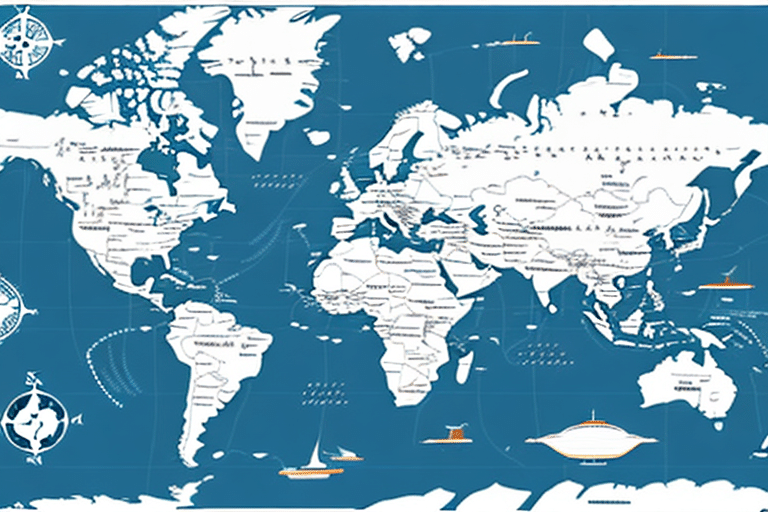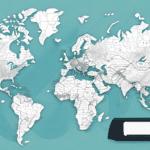Moving and Importing Maps in UPS Worldship
UPS Worldship is a robust shipping software designed to help businesses streamline their shipping operations. A standout feature of this software is its mapping capabilities, which allow users to customize and manage shipping routes effectively. By moving and importing maps in UPS Worldship, businesses can create precise shipping routes, monitor shipments in real-time, and enhance overall customer satisfaction. This guide delves into the fundamentals of UPS Worldship maps, the process of importing and moving them, common challenges users may encounter, and best practices for optimal map management.
1. Understanding the Fundamentals of UPS Worldship Maps
UPS Worldship integrates with Google Maps to provide accurate and dynamic mapping functionalities. These maps are essential for locating destinations, planning efficient shipping routes, and tracking shipments in real-time. Key features include:
- Customization Options: Add labels, markers, and color codes to represent various shipping destinations and routes accurately.
- Geocoding and Routing: Convert addresses into geographical coordinates and optimize routes based on distance, traffic, and delivery times.
- Real-Time Tracking: Monitor the progress of shipments to quickly identify and address potential delays.
The integration with Google Maps ensures that users have access to the latest information on road conditions, traffic patterns, and other factors that may influence shipping efficiency.
2. Importing Maps into UPS Worldship: A Step-by-Step Guide
Importing maps into UPS Worldship is a straightforward process that enhances the accuracy of shipping operations. Follow these steps to import maps effectively:
- Select the Maps Option: From the main menu, navigate to the "Maps" section.
- Choose Import: Opt to import a new map or update an existing one using an Excel file.
- Format the Excel File: Ensure the file includes necessary details such as street address, city, state/province, postal code, and country code, adhering to UPS Worldship's specifications.
- Import the File: Upload the formatted Excel file. The imported map will then be visible within the software for route planning and shipment tracking.
Accuracy is paramount when importing maps. Verify that all addresses are correct and up-to-date to prevent routing errors and ensure efficient shipping processes.
3. Customizing and Moving Maps in UPS Worldship
Customizing maps in UPS Worldship allows businesses to tailor their shipping routes to their specific needs. Here’s how to move and customize maps:
Moving Existing Maps
To relocate an existing map:
- Select the "Maps" option from the main menu.
- Choose the map you wish to move.
- Drag the map to the desired location or use the arrow keys for precise adjustments.
- Save the changes to update the map’s position.
Ensure the new location is accurate to maintain the integrity of shipping rates and delivery times.
Customizing Map Appearance
Enhance map visualization by:
- Changing the color scheme to differentiate between various shipping routes.
- Adding labels or markers for key destinations.
- Adjusting the zoom level for better visibility of specific areas.
These customizations help in visualizing shipping routes clearly, facilitating better decision-making.
4. Benefits of Customizing Maps in UPS Worldship
Customizing maps within UPS Worldship offers numerous advantages for businesses:
- Enhanced Route Accuracy: Precisely locate destinations and plan the most efficient shipping routes.
- Real-Time Shipment Tracking: Monitor shipments continuously to ensure timely deliveries.
- Cost Reduction: Optimize routes to minimize shipping costs and reduce fuel consumption.
- Improved Customer Satisfaction: Reliable and faster shipping processes lead to higher customer trust and loyalty.
- Operational Efficiency: Manage multiple shipments simultaneously, identifying and resolving issues promptly.
By leveraging these benefits, businesses can achieve a more streamlined and effective shipping operation.
5. Common Challenges and Troubleshooting
While importing and moving maps in UPS Worldship is generally seamless, users may encounter certain issues:
Incorrect Address Information
Errors in the Excel file can lead to inaccurate maps. Ensure all address details are correct and formatted properly before importing.
Software Compatibility Issues
Outdated UPS Worldship software may cause import failures or map inaccuracies. Regularly update the software to the latest version to ensure compatibility and access to new features.
Unsupported File Formats
Only use supported file formats such as .xls or .csv when importing maps. Attempting to import unsupported formats can result in error messages.
Large Map File Sizes
Large files can slow down the import process or cause the software to crash. Optimize map files by reducing resolution or simplifying designs, and consider breaking them into smaller sections if necessary.
Addressing these issues promptly ensures smooth map management and uninterrupted shipping operations.
6. Advanced Mapping Techniques: Geocoding and Routing
For businesses looking to maximize the potential of UPS Worldship maps, utilizing advanced techniques like geocoding and routing can offer significant benefits:
Geocoding
Geocoding transforms address information into geographical coordinates, enabling precise location tracking and route planning. This enhances the accuracy of shipment tracking and delivery predictions.
Routing Optimization
Routing features analyze various factors such as distance, traffic conditions, and delivery windows to determine the most efficient shipping routes. This optimization leads to faster deliveries and reduced operational costs.
Implementing these advanced techniques can lead to substantial improvements in shipping efficiency and cost-effectiveness. According to a U.S. Department of Transportation report, optimized routing can reduce fuel consumption by up to 10%, translating to significant cost savings for businesses.
7. Best Practices for Managing Maps in UPS Worldship
Effective map management is crucial for maintaining efficient shipping operations. Adopt the following best practices:
- Regular Updates: Continuously update map information to reflect changes in addresses, routes, and shipping destinations.
- Data Accuracy: Ensure all imported data is accurate to prevent routing errors and delivery delays.
- Consistent Labeling: Use standardized labels and markers to maintain clarity and consistency across all maps.
- Backup Map Data: Regularly back up map data to protect against data loss or corruption.
- Employee Training: Train staff on effective map customization and management to maximize the software's capabilities.
Implementing these practices helps in maintaining the reliability and efficiency of shipping processes, ultimately contributing to better business outcomes.
Conclusion
Optimizing map management in UPS Worldship is essential for businesses aiming to enhance their shipping efficiency and customer satisfaction. By understanding the fundamentals, following a systematic approach to importing and moving maps, and employing best practices, businesses can harness the full potential of UPS Worldship's mapping features. Advanced techniques like geocoding and routing further refine shipping operations, leading to cost savings and improved delivery performance. Implement these strategies to ensure your shipping processes are both efficient and reliable.






















